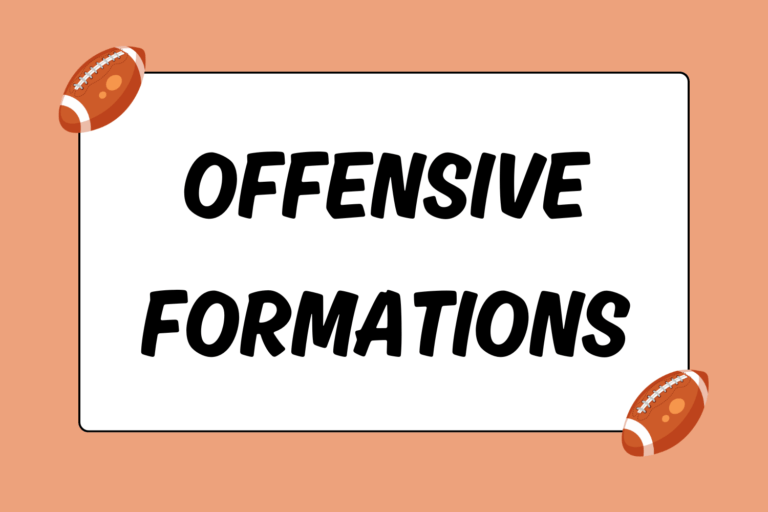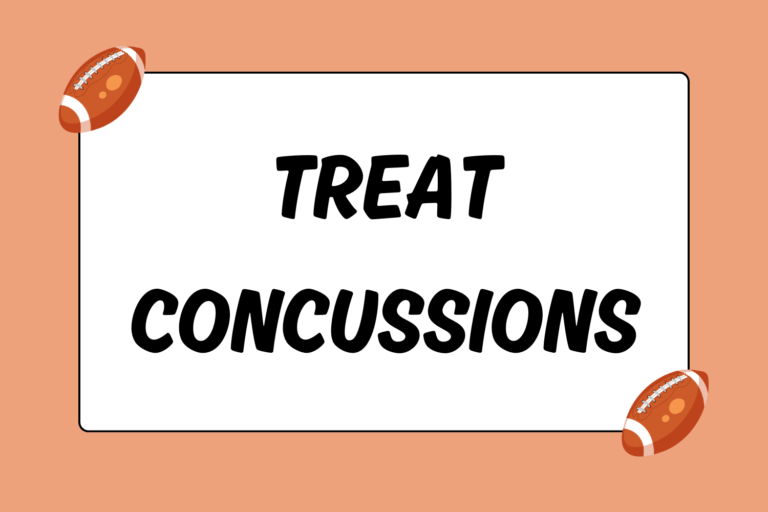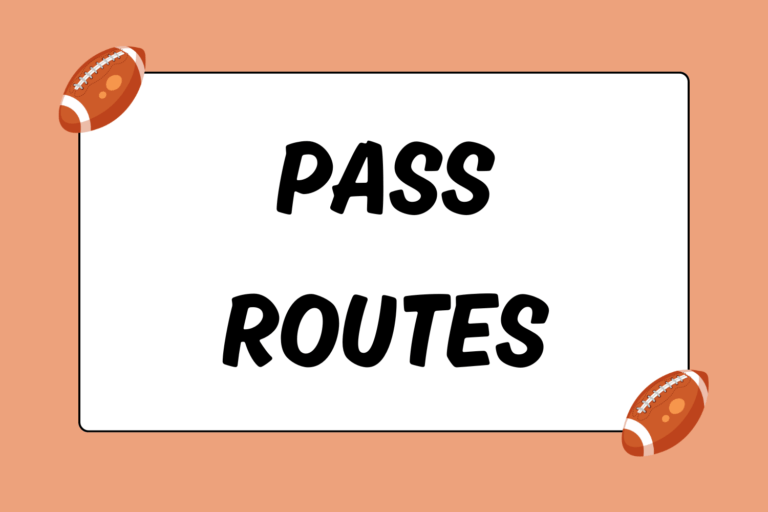There is something that most players find very rewarding about suiting up before a game or practice session. A shift in mentality that comes with going from plain clothes to football pads occurs; like medieval knights put on their armor before battle, football players suit up in a similar way before heading off to compete on the gridiron. Both armor and pads have the same goal in mind: Safety. Here is a list of the more common pieces of equipment used by players.
Required for the Game
Depending on the type of football being played, certain pieces of equipment are a requirement for players to participate in a game. With the exception of flag football, players must wear the following pieces of equipment during a game:
Leg Pads
Unlike the upper body, a player’s body from the waist down is fairly exposed. There are, however, a few key areas that get covered:
- The Knees: A pair of soft-foam pads, shaped to fit the contours of the knee, sit centered on the knee cap and measure approximately three inches across by four inches long. These pads are designed to protect the front of the knee joint, a vulnerable joint that’s especially susceptible to injury when flexed.
- The Hips: Two T-shaped pads sit in front of both hips, just below the waist line. These pads are approximately four inches across at the top, and extend downward about six inches. They’re specifically designed to protect the hip joint, as a direct hit on either hip can be extremely painful and debilitating.
- The Thighs: Though not a joint, the tops of the thighs do cover the quadriceps muscles, which can be injured if they take a strong shot. Two rounded, rectangular pads measuring six inches across by eight inches long sit on the top of the quadriceps muscles in both legs. The thigh pads are also thicker than the other pads, as they cover an area more likely to encounter contact.
- The Tailbone: A single pad about three inches wide and six inches long sits along the tailbone, and protects the coccyx from injury.
These pads are all held in place via special pockets sewn into the inside of football pants, or else placed in a girdle worn under the pants. Though they may not seem necessary, one well-placed helmet on any of the areas listed above would quickly convince anyone who’s uncertain of their worth.
Shoulder Pads
Aside from the helmet, the shoulder pads are probably the quintessential piece of football equipment. Not only do they cover the shoulders, but they also go over the collarbone, shoulder blades, and chest from the bottom of the sternum up. The underside of the pads features a series of soft foam pockets covered in cloth. Although these pocketed pads do a fair job of protecting the player, the real work is done by the exterior layer of the pads. Made of a series of molded hard plastic sheets, the outside of the shoulder pads work by absorbing the force of an impact and distributing it across its surface.
The pads themselves are actually made up of a couple of different pieces:
- The centerpiece covers the chest, shoulder blades, and part of the collarbone.
- Two firm pieces extend outward from the centerpiece along the top of the shoulders.
- Two more pieces that cover where the shoulder meets the arm are attached to the stiff pads covering the tops of the shoulders.
The shoulder pads are held in place by a series of straps that are attached to the lower portion of the centerpiece immediately under the shoulder blades, and buckled into two ports on the section that covers the chest. These straps run alongside the ribs underneath the armpits, and are used to adjust how tightly the shoulder pads are attached.
Though different players wear different sizes of shoulder pads, all players must wear them during a game. And even if it wasn’t required, it would be safe to assume that most players would still use them.
The Helmet
Playing football without a helmet is on the same level as trying to juggle live grenades: Eventually it will result in a serious injury. The helmet is designed much like shoulder pads are, with a very tough exterior covering a soft interior:
- The exterior of a helmet is made of high-density plastic that’s designed to distribute the force of an impact across the entire helmet. This reduces the amount of force that would otherwise be delivered to a small, specific area of the head.
- The interior of a helmet consists of pockets filled with soft foam, or another equally soft material. More intricate models replace these foam pockets with a series of air bladders, which allow players to adjust the tightness of the helmet by adding or releasing air.
- Attached to the front of the helmet is the facemask, a series of interconnected, rubber-coated metal bars arranged to protect the face from injury. There are many different facemask designs in use, with varying levels of protection inherent in the design; depending on their position, players will sacrifice protection for increased visibility.
Design differences aside, the helmet is arguably the most important piece of protective equipment in the game. It’s not difficult to imagine the horrible injuries that would result from playing without one.
Fun Fact:
- The first helmet was used in 1893.
- The first types of helmets were basically padded leather hats.
- The NCAA required players to use helmets in 1939, and in 1943 the NFL followed suit.
- In 1948, the L.A. Rams became the first NFL team to paint their logo on players’ helmets.
- Currently, the Cleveland Browns are the only NFL team not to have their logo on players’ helmets.
The Mouthguard
Though it’s not unique to football, the mouthguard is vital to keeping the teeth and tongue safe. Though there are a couple of different styles of mouthguard design, a normal mouthguard is a piece of moldable rubber shaped like a horseshoe that fits over the teeth of the upper jaw. A new mouthguard is basically a template; players must mold them to their teeth to fit properly, which is key to ensuring that the mouthguard does its job.
Just like other pads, the mouthguard’s job is to absorb the force of impact. When a player takes a hit, the force of that hit disperses throughout the player’s body around the impact of the hit — not just across, but through. It’s common for players to clench their jaws in reaction to a hit. Without a mouthguard in place, such a hit could easily break a player’s teeth.
Optional Accessories
While the items above are mandatory for playing football, there are several other pieces of equipment also designed for protection. These pieces are permitted for use, though not required.
Neck Roll:
Sometimes referred to as a ‘cowboy collar,’ the neck roll attaches to the back of the shoulder pads on top of the hole where a player’s head slides through. Extending straight up from the back of the pads, the neck roll limits the distance that a player’s head can be forced backwards, reducing the risk of whiplash and similar types of injuries.
Rib Pads:
Popular with quarterbacks, a set of rib pads encircles the part of the rib cage not covered by the shoulder pads, providing added protection to these areas. Most rib pads come in the form of a separate piece, though there are some types that can be attached directly to the shoulder pads.
Helmet Visor:
Though it does provide added protection against getting poked in the eye, most players use a helmet visor to reduce the amount of light or glare they have to deal with during a game. Helmet visors are basically large lenses similar to the type found in sunglasses. They’re very dark and sometimes mirrored, reflecting a certain amount of light and making it easier for the player to see. Visors attach directly to the facemask.
Arm Pads:
Basically just a sleeve with a foam pad on one side, arm pads are worn on the forearms and protect the top of each forearm from impact trauma like abrasions and bruises. Arm pads are usually worn by younger players.
There are more optional equipment accessories in use today, but these are by far among the most commonly used.
Better Safe Than Sorry
Although football is a game that features lots of contact and collisions, it’s important to note that several safety requirements are in place to keep players safe. Requiring certain pieces of equipment is just one of the safety structures inherent in the game, though it’s definitely more prominent than others. And safety aside, it feels pretty good to throw on the pads and helmet before a game — like a knight suiting up before battle!





